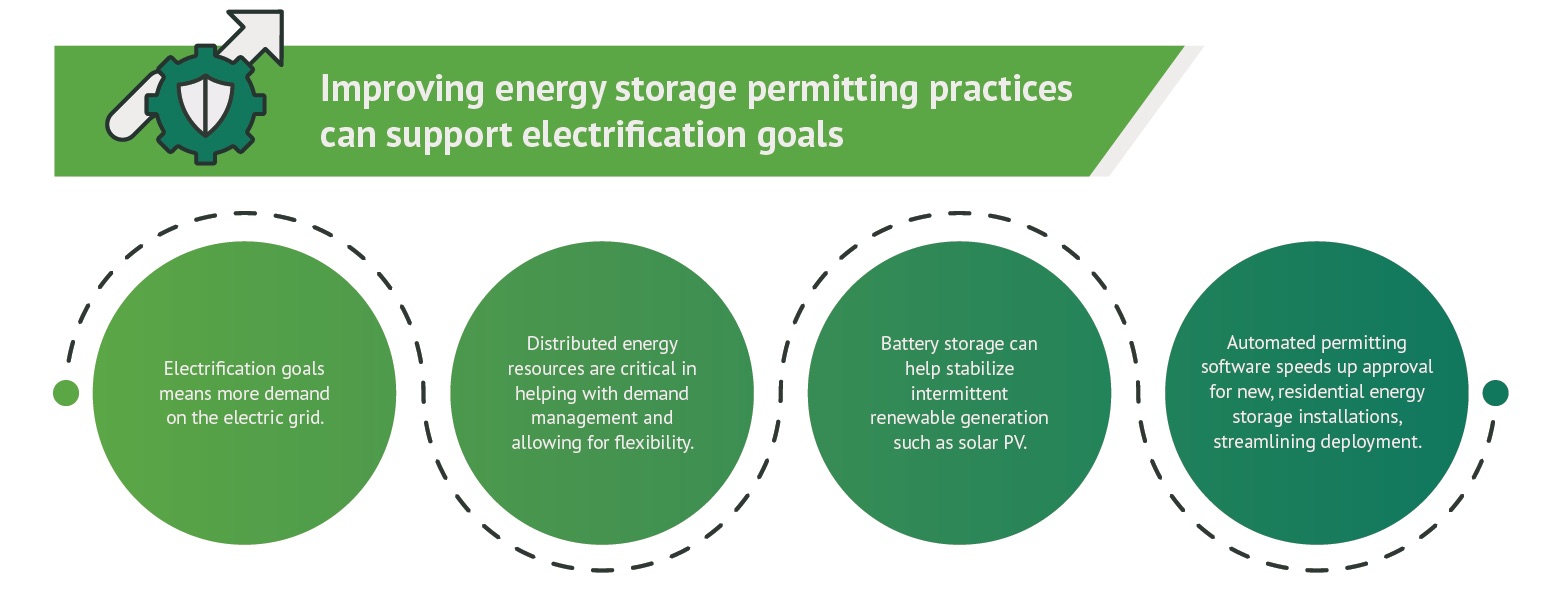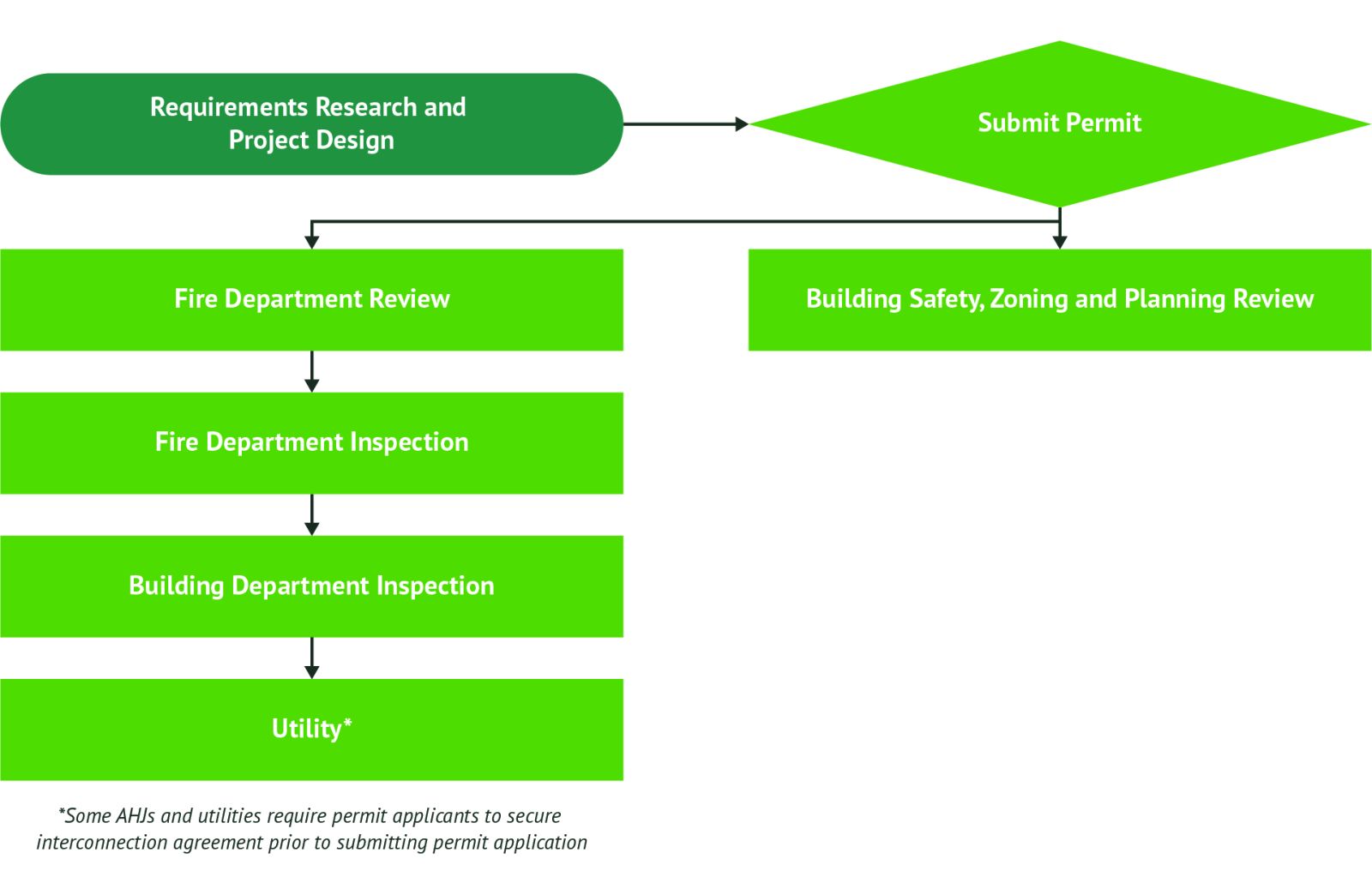5 Best Practices to Overcome Energy Storage Permitting Hurdles
States and utilities are seeking to expand residential and commercial use of small-scale battery energy storage systems to relieve grids stressed by extreme weather, provide backup power to customers during grid outages, and make increased use of renewable energy.
Battery energy storage of less than 1 megawatt installed on the customer’s side of the meter offers both homeowners/property owners and energy providers with resiliency to avoid and adapt to power outages, and can help balance energy demand and the intermittences of solar and wind power.
But installing these “behind-the-meter” distributed energy resources is being hampered by a lack of standardized local government permitting and approval processes, often causing lengthy delays and adding significant costs.
Projects must meet state building requirements, but local authorities having jurisdiction (AHJs), such as county or city planning departments, have their own permitting processes. This frequently results in overly complex and inconsistently applied regulations, codes, and fire standards for on-site energy storage system permits.

To streamline processes and reduce delays in California, the nonprofit Center for Sustainable Energy and its research partners have developed an Energy Storage Permitting Guidebook to be published in early 2024, as part of a California Energy Commission-funded project. Many of the regulatory barriers to battery energy storage systems in California also exist in other states — these key recommendations can be applied elsewhere.
Key findings and recommendations
1. Technology changes complicate permitting.
Energy storage system technology is evolving rapidly. Each new battery type that comes on the market complicates permitting. Problems arise in how to conduct inspections and what components need review, particularly when parts are assembled as a single system.
Best practice: Battery energy storage system manufacturers should provide permitting officials with online and in-person equipment training.
2. Updates of codes are not aligned.
Requirements for design and installation of battery energy storage systems can be found in a variety of major residential, electrical, building, or fire codes, and the associated technologies are governed by a variety of standards. It’s not always clear how they interact, particularly when codes and standards are updated at separate times, some only every few years.
Best practice: Incentivize AHJs to review and update local permitting codes more frequently.
3. Codes are applied inconsistently.
Unlike other building equipment, battery energy storage systems are relatively new, so how codes are applied to planning and review is not always clear. This leads to permitting application errors and frequent requests for minor plan updates that are costly and delay projects.
Best practice: Create state-level guidance and formatting standards on how AHJs should apply codes.
4. Fire safety recommendations are unclear.
Equipment must meet overall fire potential standards set by UL Solutions that evaluate its operational safety. However, standards do not specify such aspects as equipment spacing or on-site fire safety measures, making it difficult for local fire agencies to decide what meets requirements.
Best practice: Create statewide guidance on how to apply the fire code to energy storage systems and work with the state fire marshal to educate AHJ officials and installers.
5. Installations often require other alterations.
Adding an energy storage system to an existing building often requires reconfiguring circuits. This results in upgrades or alterations to other electrical equipment, which increases the plan’s complexity and requires time for more reviews and inspections.
Best practice: Require statewide certification of electrical inspectors so that they are better equipped to handle multiple types of equipment field inspections.

Help is available
To simplify the energy storage system permitting process, AHJs are encouraged to automate using the free software package SolarAPP+, developed by the National Renewable Energy Laboratory, one of the guidebook’s project partners. It can help review energy storage system plans and conduct some 150 code compliance checks.
Meanwhile, property owners and installers can benefit from a variety of energy storage incentives to defray the estimated $12,000-$22,000 cost of a typical home or small business battery energy storage system.
California, Connecticut and Hawaii offer both upfront installation and performance capacity incentives. Others, including Connecticut, Massachusetts, Rhode Island, and Vermont, reward consumers with existing batteries for discharging during scheduled peak hours. California and Connecticut also incentivize equity projects that serve low-income households, and medically vulnerable consumers who require uninterrupted electricity to power medical equipment or keep medicines refrigerated.
Information on incentives related to battery energy storage is available online at DOE’s Battery Policies and Incentives Search.
The bottom line
Battery energy storage benefits include:
- Ensuring uninterrupted power during grid outages.
- Reducing monthly utility bills by shifting load demand.
- Maximizing electric vehicle charging scheduling and cost savings.
- Decreasing fossil fuel energy generation and carbon emissions.
Standardizing disparate and often confusing permitting processes and increasing training can accelerate deployment of energy storage to help assure the industry’s continued growth.
Kelly Leathers is Project Manager at Center for Sustainable Energy, a national nonprofit that accelerates adoption of clean transportation and distributed energy through effective and equitable program design and administration.
Center for Sustainable Energy | energycenter.org
Author: Kelly Leathers
Volume: 2024 January/February









